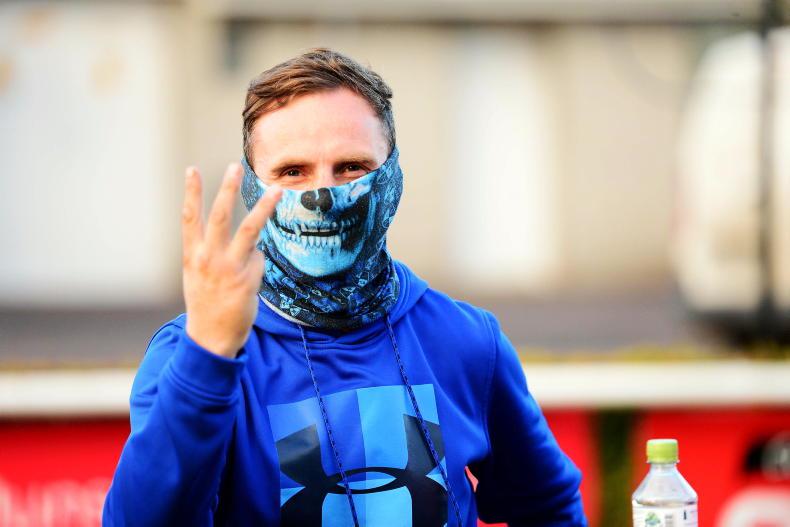SUSAN Salter BSc (Hons) BVM&S MRCVS is the founder of SES Equine Veterinary Services an ambulatory practice that specialises in equine reproduction and stud medicine.
SES Equine has already gained a great reputation in dealing with fertility issues in horses having helped many difficult mares get pregnant since opening its doors in 2020. This practice is performing new research in key areas of equine reproduction alongside other experts in the field. Although a percentage of mares cycle all year round, most mares remain in anoestrus throughout winter, experience a phase of transition during spring and have regular ovulatory cycles throughout the summer in response to the increase in day length.
The beginning of the natural equine breeding season in the northern hemisphere is considered to be sometime in April or May depending on proximity to the equator.
The thoroughbred industry’s breeding season officially begins on February 15th in the northern hemisphere, much earlier than the natural breeding season. Therefore many methods to advance normal cyclicity in the mare have been investigated.
Photoperiod
Artificial lighting to lengthen photoperiod or day length for 45-60 days is used to hasten the onset of transition. In practice, a lighting programme can be initiated at the beginning of December with 15-16 hours of light.
This is often successful at inducing follicular activity by the start of February. Mares are normally brought into stables at dusk where light is extended until approximately 11pm.
The Equilume light mask acts to administer blue light to a single eye to increase photoperiod and therefore advance cyclicity. It is practical on farms where mares are not stabled at night time. It has been proven to reduce gestational length in early foaling mares and to increase live birth weights in foals which correlates positively to size and weight of these animals as yearlings.
The author would emphasise the importance of providing early foalers with a lighting programme. This will help them to cycle normally post foaling. Often they will have been under a lighting programme the previous season if they were part of a non-pregnant herd.
GnRH agonists
Many protocols are described using GnRH agonists. Buserelin and deslorelin protocols are considered to be the most effective. They have been shown to advance the first ovulation of the year, particularly if given when the mare is in late transition, i.e., when the mare has oedema and has significant follicular activity. Mares that have been programmed using GnRH agonists (goserelin, deslorelin and buserelin) should be given hCG to induce ovulation.
Artificial light protocols hasten the onset of transition but do not act to reduce the transitional period. Karen Wolfsdorf at the Hagyard Institute has recently described an effective buserelin protocol in mares already under the influence of a light programme. A course of the GnRH agonist in extended photoperiod primed mares was effective at inducing ovulation in 64% of anoestrus mares and 94% of transitional mares. Post ovulation, the mares that did not become pregnant returned to oestrous and cycled normally.
Goserelin is available commercially for use in human medicine. “Zoladex” is a long acting implant containing this potent GnRH agonist. 1.2 mg - 1.6 mgs is considered to be the effective dose range in mares. The author rarely uses “Zoladex” but will consider it in mares that have not responded to other treatments.
Dopamine antagonists
Sulpiride and domperidone are most effective in mares in transition who have been exposed to light therapy. They bind to dopamine receptors to prevent the inhibition of prolactin secretion. Prolactin is thought to stimulate the expression of ovarian gonadotrophin receptors. This in turn increases ovarian sensitivity to LH and FSH which promotes cyclicity. Both sulpiride and domperidone are available in a compounded paste from BOVA.
Progesterone therapy
Progesterone therapy is indicated in mares in mid to late transition but not in early transition or anoestrus. During transition there is insufficient storage and secretion of leutinising hormone (LH) to promote maturation and ovulation of the dominant follicle(s).
Progesterone therapy acts to suppress the secretion of LH leaving a stored backlog. Once therapy is stopped (upon detection of a large follicle), LH levels are secreted in adequately high amounts to promote maturation and ovulation of dominant follicle(s).
Altrenogest (synthetic progestin) is widely used in mares to advance normal cyclicity. It acts to mimic the actions of endogenous progesterone. Mares are normally treated with oral altrenogest for 10-14 days. They should be treated every 5-7 days with injectable altrenogest according to studies performed using “Readyserve”.
The progesterone releasing vaginal device (PRID) is considered to be a safe and effective way of delivering progesterone to the mare for a period of 10 days. They do not contain altrenogest. Altrenogest products have been banned by the BHA in “thoroughbreds from birth until permanent retirement from racing”. This makes the PRID an alternative option for use in fillies in training who are being prepared for breeding.
This is not considered significant, however complications can include discomfort, particularly in maidens. The author uses the PRID delta regularly, considers it to be a cost effective option and observes good results when used in late transition. The author proceeds with some caution in maiden mares, ensuring that the device sits correctly in the vagina and warns owners about the possibility of some discomfort.
Conclusion
Many protocols exist to promote normal cyclicity early in the season. They are more effective when used in light primed mares who are in late transition in comparison to those in early transition or anoestrus. The author would encourage practitioners to consider other factors that could negatively impact normal cyclicity, for example; inadequate nutrition, poor body condition, concurrent diseases, e.g., Cushing’s syndrome or chromosomal abnormalities.


 This is a subscriber-only article
This is a subscriber-only article
 It looks like you're browsing in private mode
It looks like you're browsing in private mode











SHARING OPTIONS: